Standard First Aid, CPR & AED

In our unpredictable world, accidents and medical emergencies can happen anytime, anywhere. Whether at home, work or in public spaces, being equipped with basic first aid knowledge can mean the difference between life and death. Among the essential skills in first aid, cardiopulmonary resuscitation (CPR) and automated external defibrillator (AED) use stand out as critical interventions in saving lives.
Understanding First Aid Basics
First aid encompasses a range of skills and techniques aimed at providing immediate care to individuals suffering from injuries or sudden illnesses. From applying bandages to managing choking incidents, first aid interventions are designed to stabilize the patient’s condition until professional medical help arrives.
The Importance of CPR
Cardiopulmonary Resuscitation (CPR) is a life saving technique used to revive individuals who have stopped breathing or whose hearts have ceased functioning. CPR involves a combination of chest compressions and rescue breaths, which help maintain blood flow and oxygenation to vital organs until medical assistance can be provided.
Key Steps in Performing CPR
According to the American Red Cross, a certified first aider shall follow the below steps when performing CPR. No person shall perform first aid to another person without the proper training and skill set. To be prepared in the event of an emergency, it is necessary that people receive the proper training when performing life saving techniques.
1. Check for responsiveness
Before performing CPR, check to ensure the scene is safe and clear of any hazards, then tap the person and check for responsiveness. If they’re unresponsive, shout for help and activate emergency medical services (EMS).
2. Start Chest Compressions
Place both hands on the persons chest and push deeply and steadily 30 times.
3. Open The Airway
Open the persons airway by tilting the head back and lifting the chin, place a barrier device of thepersons mouth and nose the give 2 strong breathes.
4. Repeat
Repeat the cycle of 30 chest compressions and 2 breathes and continue giving CPR until an AED or more advanced medical care arrives.
The Role of AED
An Automated External Defibrillator (AED) is a portable device that delivers an electric shock to the heart in cases of cardiac arrest. AEDs are designed to analyze the heart’s rhythm and deliver a shock if necessary.
Key Seps in Using an AED
AEDs should only be used for individuals within a certain age and weight capacity. In the event you must use an AED, emergency medical services must also be called. No person shall perform first aid to another person without the proper training and skill set. To be prepared in the event of an emergency, it is necessary that people receive the proper training when performing life saving techniques.
1. Turn on the AED
Power on the device and follow the prompts provided. It is important to note that some AED’s may require you to press an “on” button, while others activate upon opening.
2. Attach Electrode Pads
Remove the person’s attached clothing and attach the electrode pads to their bare chest as indicated by the AED’s instructions. Place one pad on the upper right chest and one on the lower left side.
3. Stand Clear
Ensure that no one is near or touching the person and press the “analyze” button if prompted. The AED will analyze the rhythm of the heart and will determine if a shock is needed.
4. Deliver Shock
If the AED advises delivering a shock, ensure that everyone is clear of the person and press “shock” button as directed. Continue CPR immediately after the shock has been delivered.
5. Follow Instructions
Follow the AED’s instructions and continue CPR until EMS arrive or until the person shoes signs of responsiveness.
In emergencies where every second counts, having the knowledge and skills to perform CPR and use an AED can make a life-saving difference. Whether at work, home or in public spaces, being prepared to respond effectively to cardiac arrest or other medical emergencies can increase the chances of survival and recovery for those in need. Remember, by learning CPR and AED use, you have the power to be a hero and save lives.
Learn More:
To learn more about how you can participate in life-saving techniques or register for one of our upcoming Standard First Aid training courses, please contact us at info@safetyfirstconsulting.ca or call our office at 905-669-5444.
Disclaimer:
This blog does not provide medical or health advice. No information on this page is intended to be used without the proper first aid training. this blog is strictly for informational purposes only; Safety First Consulting Professional Corporation does not intend to substitute the contents of this blog for professional medical advice, training, or treatment.
The Canadian Red Cross does not include this material in its course and, therefore, does not intend the information or answers concerning it to be used as authority in a situation in which individuals require first aid.

